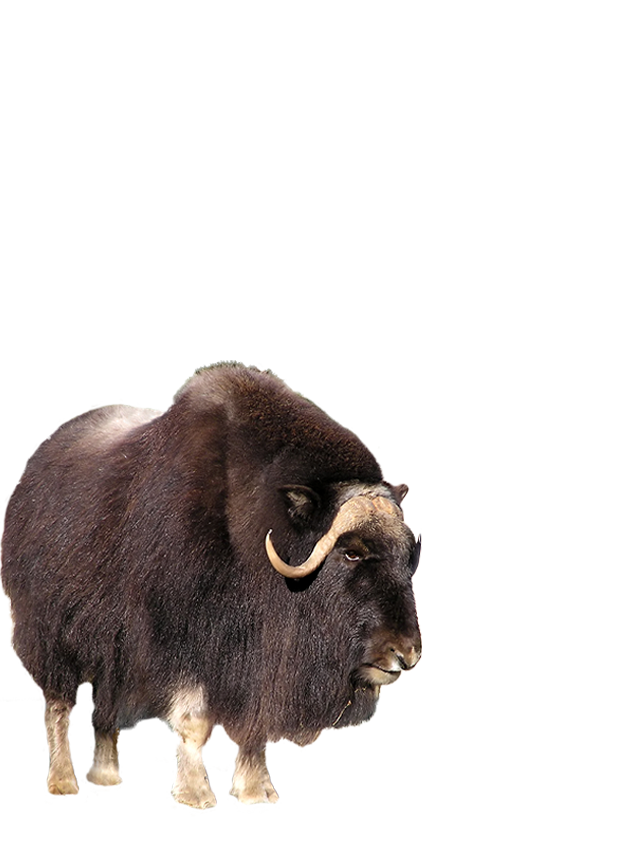
Deep in the rugged mountains and valleys of the Arctic National Wildlife Refuge, the booming sound of thick horn helmets colliding echoes across the landscape. The sound signals the beginning of the early summer mating season (called the “rutting season”) of the Northern musk ox.
Musk ox are “harem breeders,” where one male mates with the entire herd of females and defends his position as the only breeder. The males battle for this dominant position through powerful head-to-head collisions. The defending male faces a line of challengers. One by one these challengers line up opposite the defender, lower their heads, and run full speed at him. He does the same, and they crash together with a force that would likely kill a less well-protected animal. The musk ox can walk away unharmed, however, because of a special protective surface on their heads. Right between their long curved horns, males have a plate of reinforced keratin (the same material that covers their horns) called a “boss”.
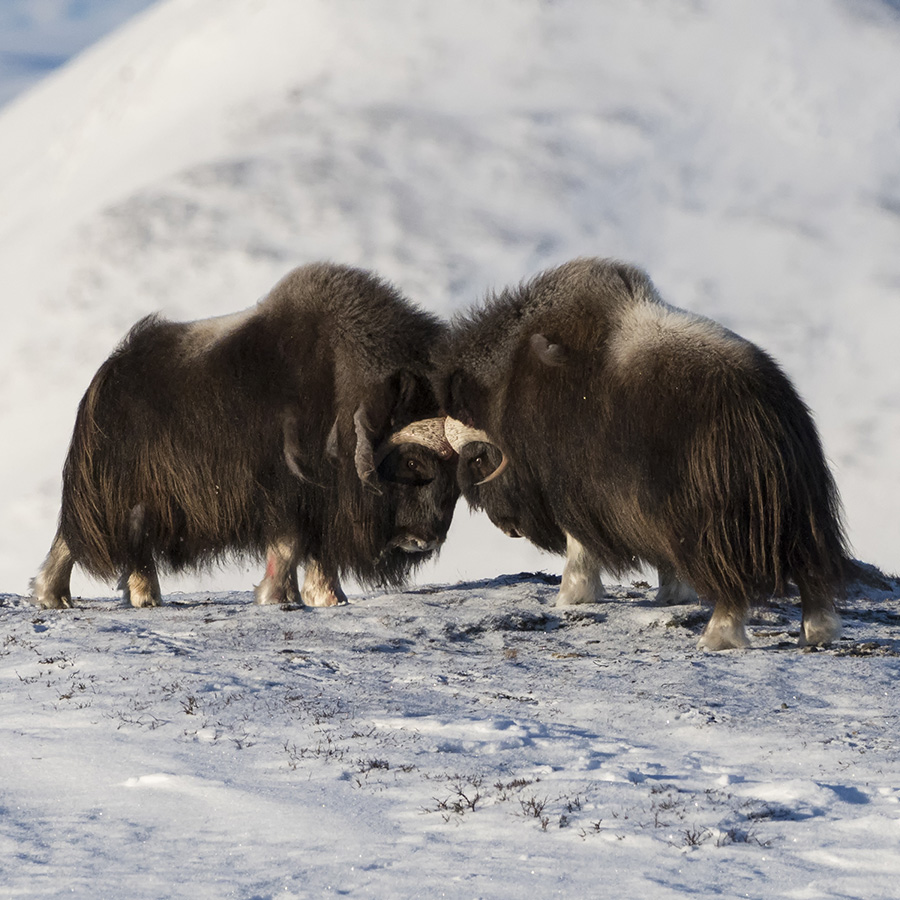
Right between their long curved horns, males have a plate of reinforced keratin (the same material that covers their horns) called a “boss”. Underneath this horny helmet is a small air cavity that cushions their skull and brain against the impact of the collision. Some of the challenges end after just one run, when the weaker male quickly realizes he is outmatched. Others last much longer, and can result in serious injury for one or both males. The risk is worth it for the male musk ox, since successful males are able to mate with an average of 12 females each year.
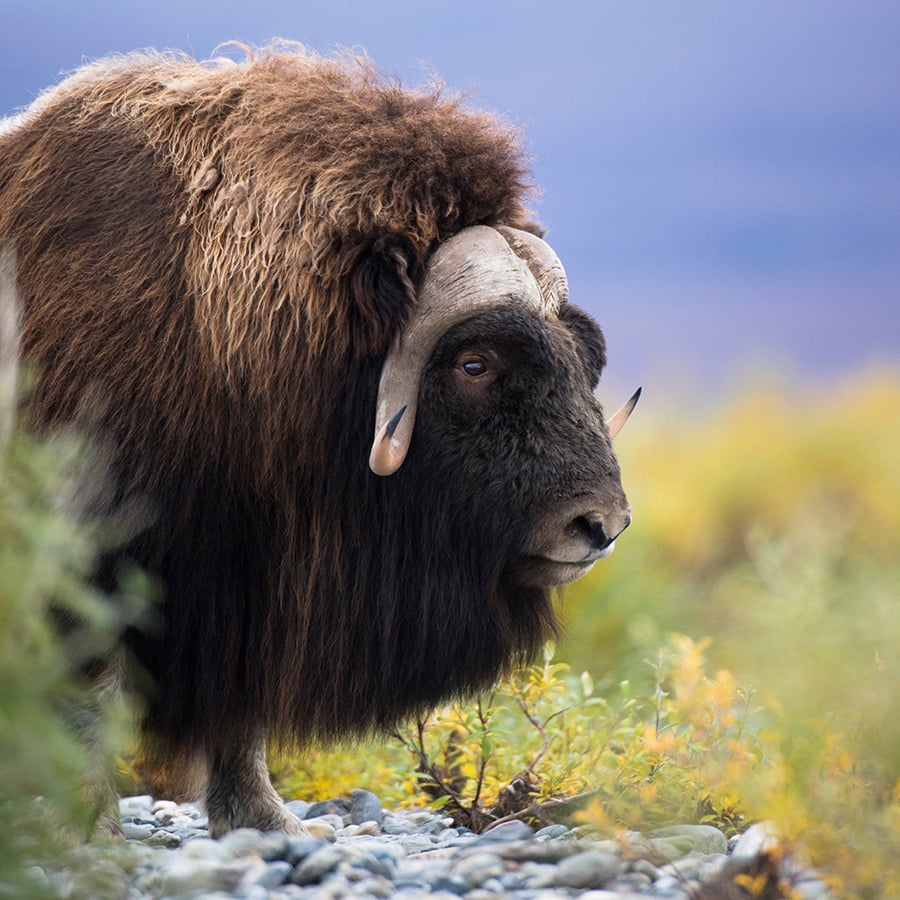
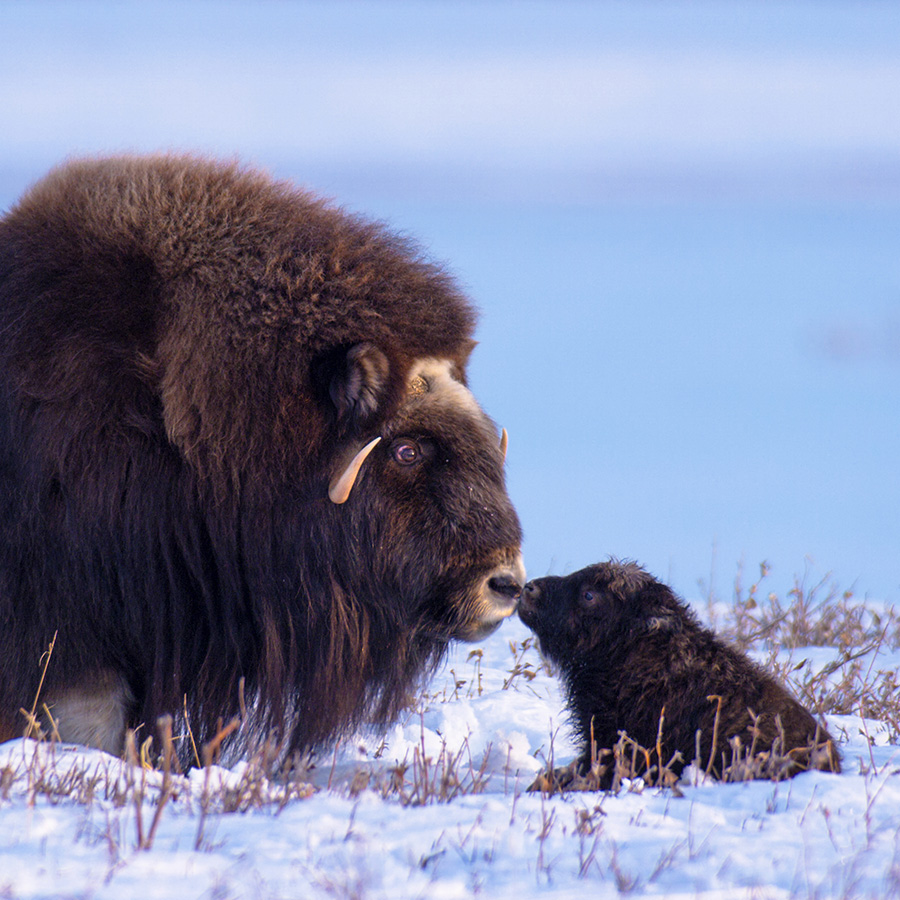
Eight months later, when the Arctic weather has warmed and food is readily available, the young musk ox are born. Musk ox calves are able to stand almost immediately and within hours can walk well enough to keep up with the herd. This ability helps prevent the calves from being an easy meal for hungry predators like wolves and bears. As long as the calves are nearby, the musk ox herd has a very effective protection strategy. The adult musk ox form a protective circle around the young, facing outward. In this formation, there is a ring of angry 750-pound animals and very sharp horns between the calves and the threat.
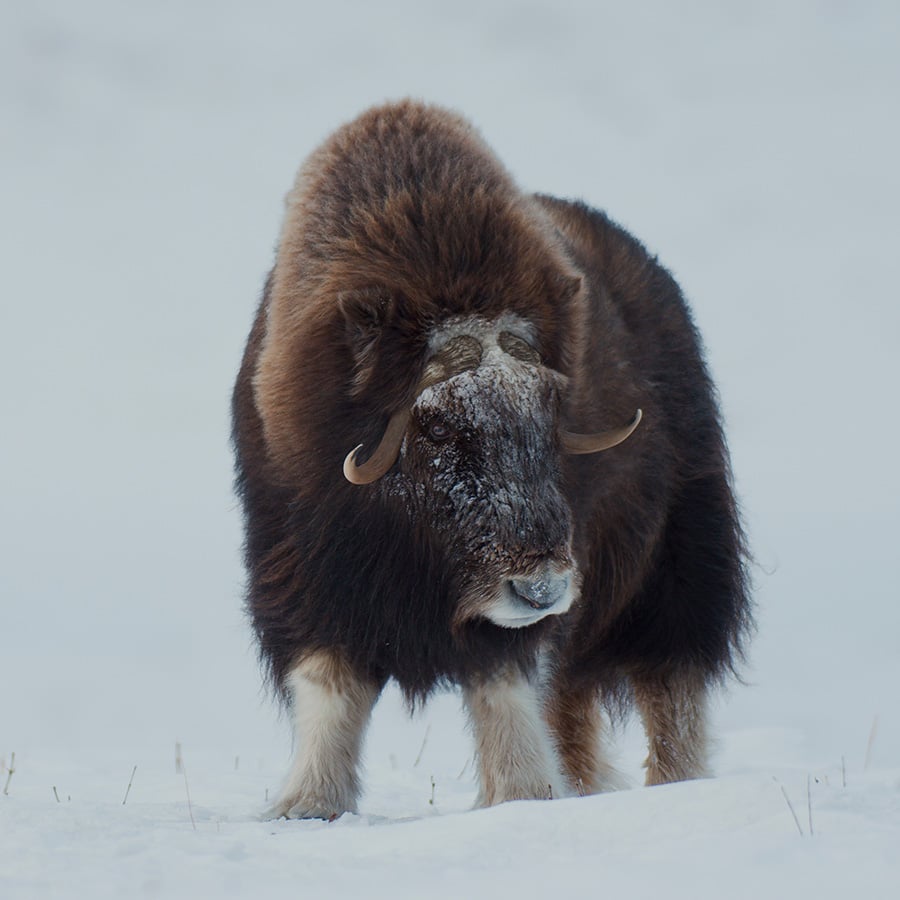
Musk ox have been around since the last ice age, and are perfectly adapted to the challenges of the cold Arctic landscapes. One of the most important of these adaptations is their double-layered coat. The bottom layer provides thick insulation, while the top is wiry and helps shed snow and other sources of moisture. Together, these layers keep the animals warm and dry even in the harshest of winters. With their long shaggy coats and helmeted heads, musk ox fit in with the wooly mammoths and saber toothed cats. But, they are also closely related to modern day goats and sheep. Like these relatives, musk ox eat a range of grasses, woody plants, willows, mosses, and lichens. This broad diet helps them survive long winters with limited food resources
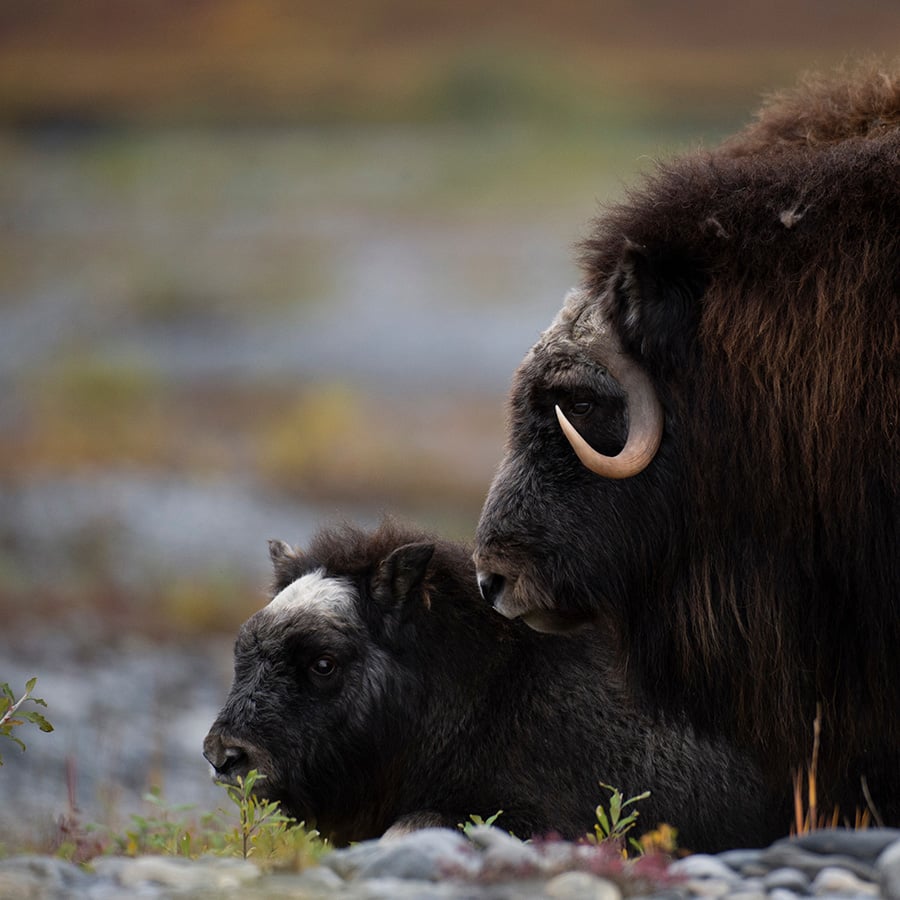
International conservation efforts successfully brought the species back from the edge of extinction, including programs to reintroduce them to Alaska. Today, however, the musk ox is facing new challenges. As Arctic temperatures rise, changing weather patterns are threatening their food sources and making life in this harsh ecosystem even more difficult. But you can help protect the future of this unique Arctic species. Visit our take action page to learn more.
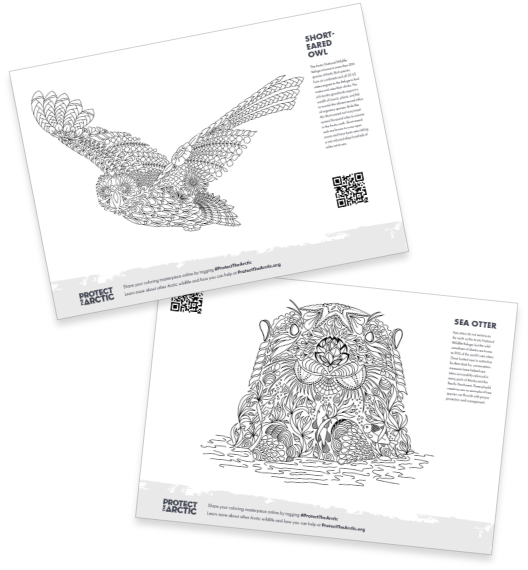
Download our pack of 6 Arctic animals to color and share. Polar Bear, Arctic Fox, Caribou, Peregrine Falcon, Short-Eared Owl, or Sea Otter… Which is your favorite?